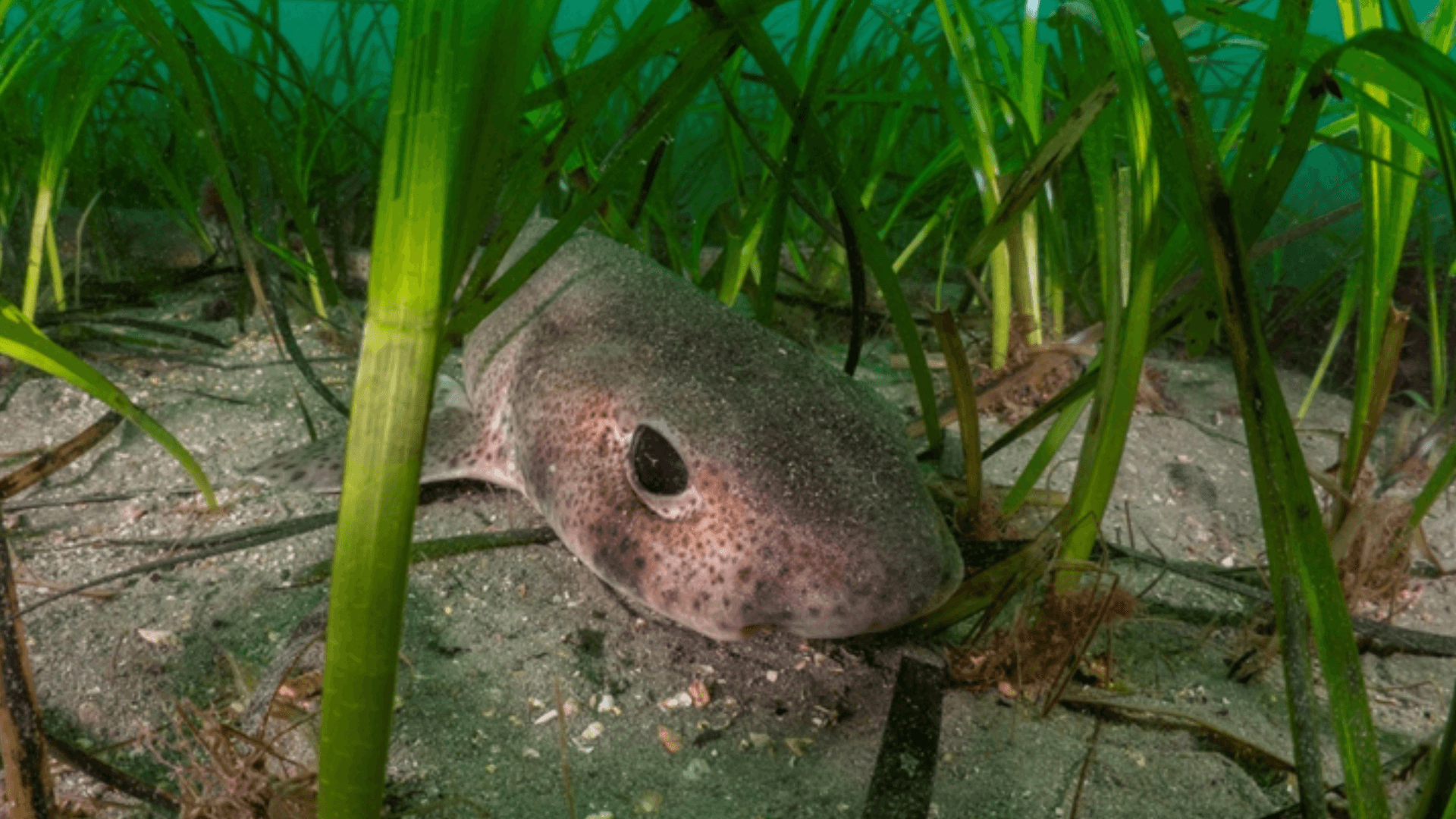In a new blog series, our Conservation Trainee Abi David explores some of the amazing creatures that call seagrass meadows their home. The small spotted catshark (Scyliorhinus canicula) is a small shark species growing up to 1 meter long and can be seen around European and North African coastlines. They generally live in shallow coastal areas and rarely go deeper than 100 meters around the British Isles, but in areas such as the Mediterranean they have been spotted swimming down to 400 meters deep. They love sandy, muddy or rocky seafloors where they feed on crab, molluscs and fish which they detect with their strong sense of smell and electrical sensors located in its snout. Sharks have really interesting skin. Tiny teeth-like structures called dermal denticles cover their whole body, giving the shark a course, sandpapery texture. These provide the shark with an armour like protection from other predators, but also from parasites, algae and barnacles that might think a sharks body would make a good home. Each denticle has a blood flow and is covered in dentine – the same thing as human teeth – to make them extra solid structures and are discarded and replaced throughout the sharks lifetime. Denticles also reduce drag whilst swimming, allowing the creatures to swim at high speeds. This particular property has been of interest to companies, who have mimicked the structure of the denticles with synthetic materials for human use. One such example is Speedo, who created a material called “Fastskin” for swimsuits that was so good it was banned from competitions, including the Olympics! Small Spotted Catshark egg in Seagrass Spotted catsharks are oviparous – meaning they lay their young in eggs to develop outside of the body. The female will lay her eggs in pairs in sheltered, shallow coastal areas. To keep the eggs safe during development, the female will attach the egg case to a solid structure – usually seaweed or seagrass. Once ready to lay the eggs, long tendrils at each corner of the egg will appear first. These are attached to a seagrass shoot or seaweed by the female swimming in tight circles around it. Once these tendrils are attached, the female will circle faster, pulling the rest of the egg from the cloaca and making sure it is firmly attached to the chosen structure. The eggs will develop for 8-9 months, depending on the sea temperature and then hatch into small versions of the adults. It is common to see spotted catshark egg cases washed up on beaches around the UK. If you’ve come across a small, roughly 5 -7 cm long, thin case with curly tendrils at each corner, chances are it was a spotted catshark egg case! Usually these are empty, but sometimes they will have been dislodged and wash up with the embryo inside. If you find one of these – made sure to put it in a deep rock pool and anchor it down so it doesn’t float back onto the beach! What is a spotted catsharks relationship with seagrass? This catshark uses seagrass mainly as a nursery for its young. As mentioned before, the females will wrap the tendrils of the egg cases around a solid structure such as seagrass, ensuring it doesn’t get washed away in currents and keeping the developing embryo safe. Dense seagrass meadows make perfect nursery’s once the sharks hatch from their eggs too. The meadows provide shelter from predators as well as a wide variety of food for the baby spotted catsharks to practice hunting. Adult spotted catsharks may also be spotted around seagrass meadows as a lot of their prey likes to hide between the shoots, such as crabs and small fish. Why is this species important? Unlike some of the other species mentioned in this blog series, spotted catsharks have little commercial/ human use. Some communities eat them but on a large commercial scale, they have little value. However, within ecosystems it has a couple of important roles. It is a mid-level predator, meaning it eats a wide variety of smaller creatures as part of its regular diet, but also can be prey for other bigger species, like other sharks and seals. The role of a predator is vital in maintaining healthy populations. For example, the spotted catshark loves to munch on crab, which can be quite destructive animals when their population grows too large. By keeping crab numbers at a healthy level, catsharks help maintain functioning ecosystems and happy seagrass meadows. Also, scientists can use spotted catsharks as indicator species. If they are present, it means the habitat has a healthy number of different species as the sharks wouldn’t stick around an area that doesn’t have enough food to support them. Reference : https://www.ebsco.com/research-starters/science/small-spotted-catshark



